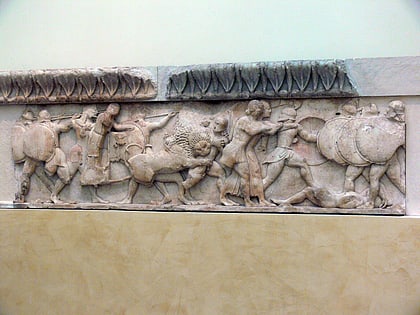Palaestra at Delphi, Delphi


Facts and practical information
Nestled in the heart of the ancient sanctuary of Delphi, the Palaestra stands as a testament to the athletic and spiritual pursuits of classical Greece. This archaeological site, once a vibrant training ground, was a crucial component of Delphi, a city renowned for its oracle and panhellenic Pythian Games.
The Palaestra at Delphi, dating back to the 4th century BCE, served as a space where athletes would prepare for competitions in wrestling, boxing, and other physical activities that were as much a part of the sacred games as the religious rituals themselves. The site is characterized by its rectangular shape, encompassed by colonnades that defined a central courtyard, where athletes trained and socialized.
Excavations have revealed various features of the Palaestra, including changing rooms, baths, and areas for spectators. The significance of this site extends beyond its physical structure; it represents the integral role of physical excellence in the cultural and religious fabric of ancient Greek society.
Today, the Palaestra at Delphi is a poignant reminder of the ancient world's dedication to the development of body and spirit. Although only the foundations and some of the lower structures remain, visitors can still capture a glimpse of the grandeur and importance that this site held in antiquity.
The Palaestra is open to the public as part of the larger archaeological site of Delphi, which is a UNESCO World Heritage site. Tourists can explore the ruins and imagine the once bustling atmosphere where athletes trained under the watchful eyes of spectators, surrounded by the stunning landscape of the Parnassus mountains.
Palaestra at Delphi – popular in the area (distance from the attraction)
Nearby attractions include: Delphi Archaeological Museum, Treasury of the Massaliots, Sicyonian Treasury, Cnidian Treasury.











